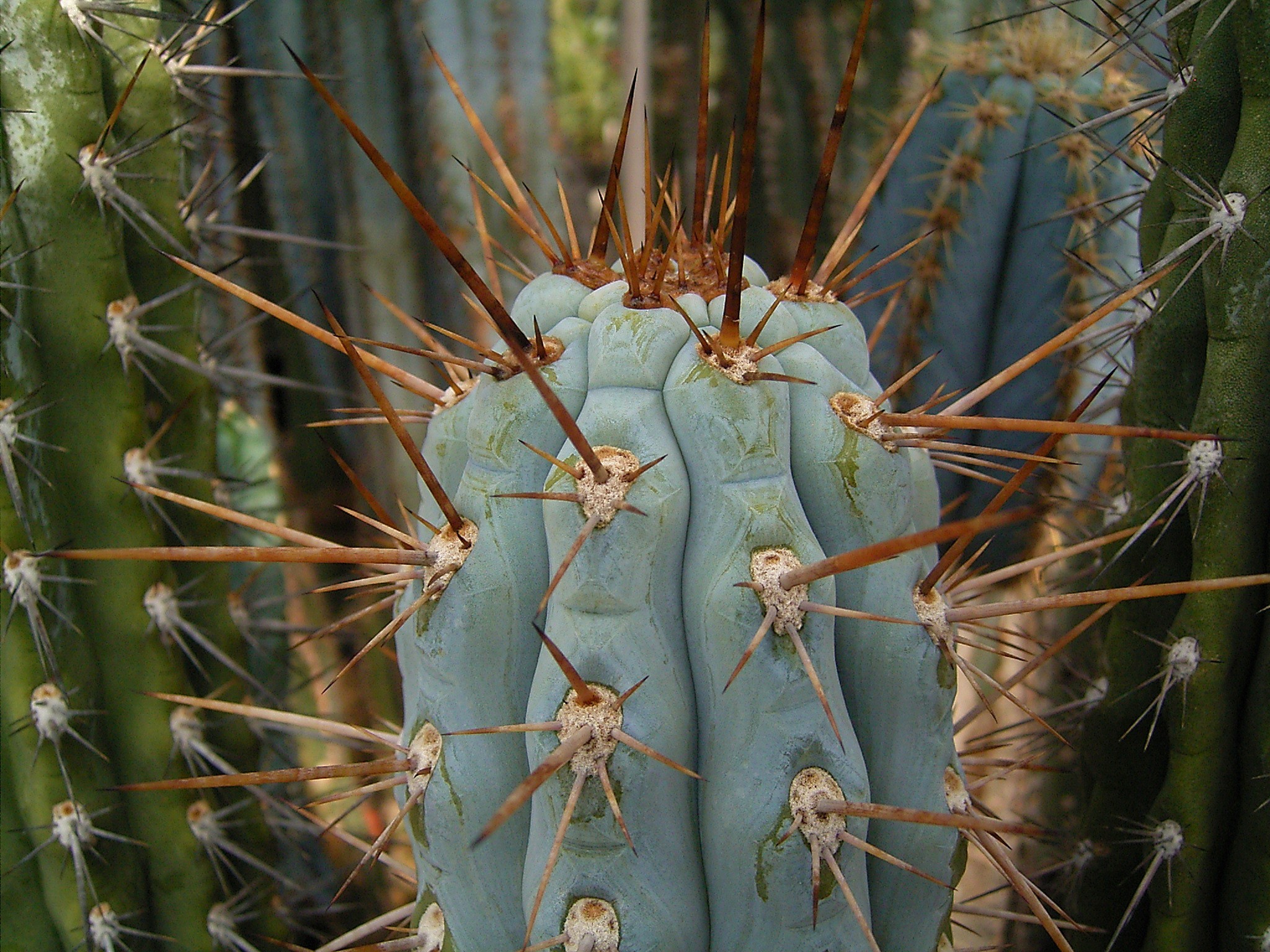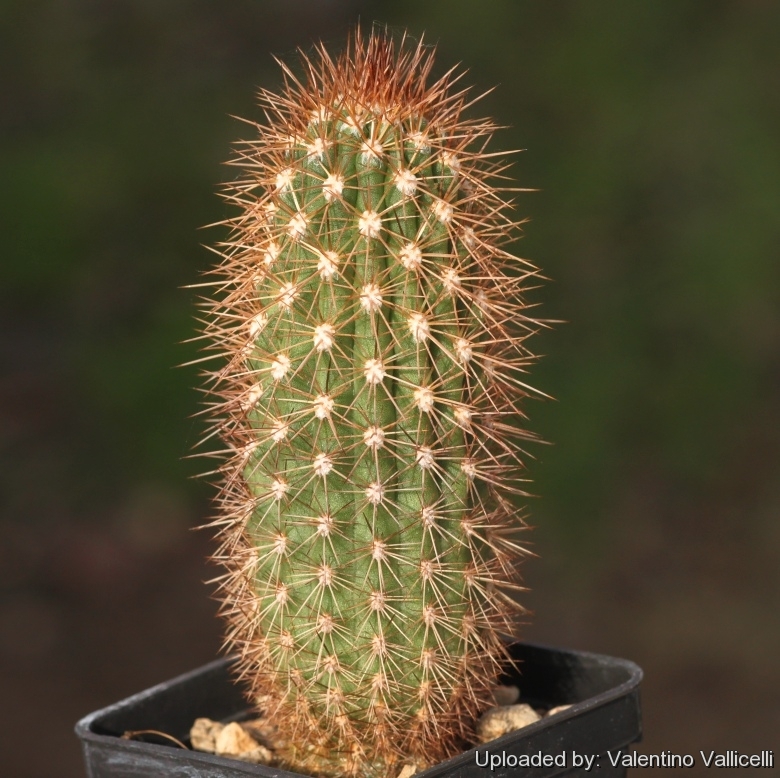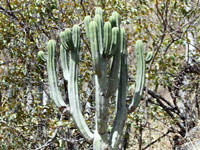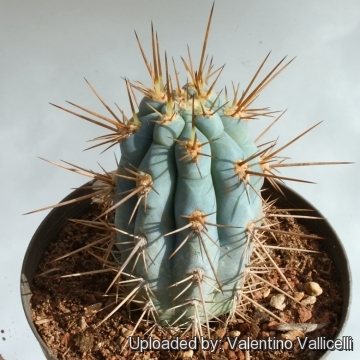Browningia
Browningia is a genus of flowering plants of the cactus family ( Cactaceae ). The botanical name of the genus honors Webster E. Browning (1869-1942), a former director of the Instituto Ingles in Santiago de Chile.
Description
The bushy or tree-like, usually columnar -growing species of the genus Browningia are branched, often have a well-trained base and reach stature heights of up to 10 meters. The cylindrical shoots have a diameter of up to 50 centimeters. On the numerous low ribs sit large areolae. The areoles in the growth area are heavily spined, while the areoles usually have in the reproductive area only a few or no thorns.
The tube- to bell-shaped flowers are white to purple, and open into the night. The areoles of the flower cup and the flower tube (almost) bare. The flower tube is slightly curved.
The small fruits are usually very different, as the seeds.
Systematics and distribution
The species of the genus Browningia are common in Bolivia, northern Chile and Peru. Only in 2006 was known with the description of Browningia hernandezii a species in Colombia.
The first description of the genus was made in 1920 by Nathaniel Lord Britton and Joseph Nelson Rose. The type species of the genus Cereus candelaris. Belong to the genus of the following types:
- Browningia albiceps
- Browningia altissima
- Browningia amstutziae
- Browningia caineana
- Browningia candelaris
- Browningia chlorocarpa
- Browningia columnaris
- Browningia hernandezii
- Browningia hertlingiana
- Browningia microsperma
- Browningia pilleifera
- Browningia utcubambensis
- Browningia viridis
Synonyms of the genus are Gymnanthocereus Backeb. , Azureocereus Akers & H.Johnson, Castellanosia Cárdenas and Gymnocereus Backeb.










